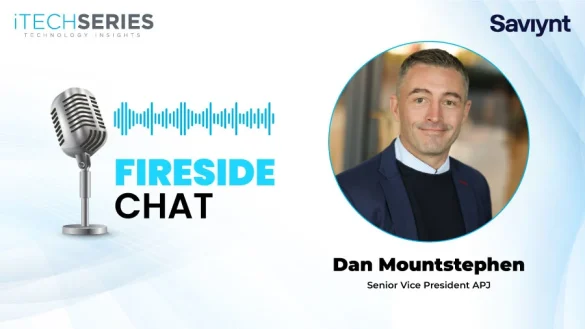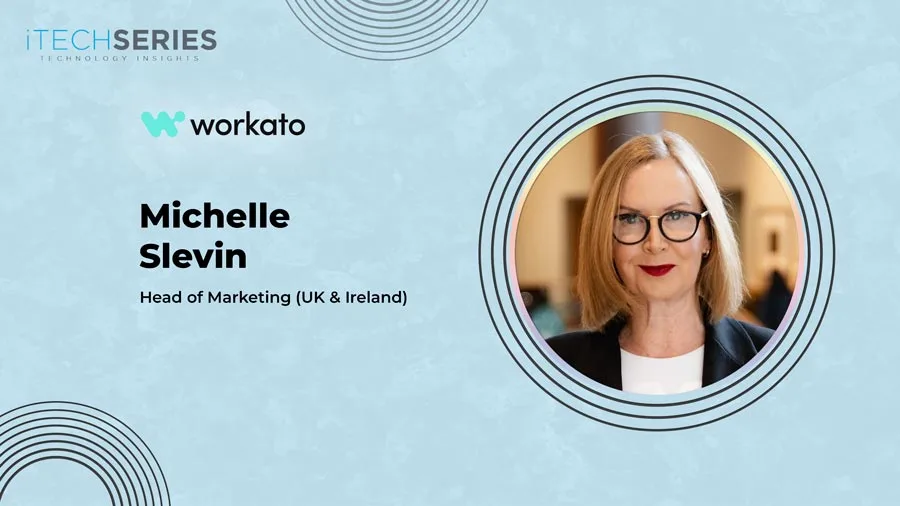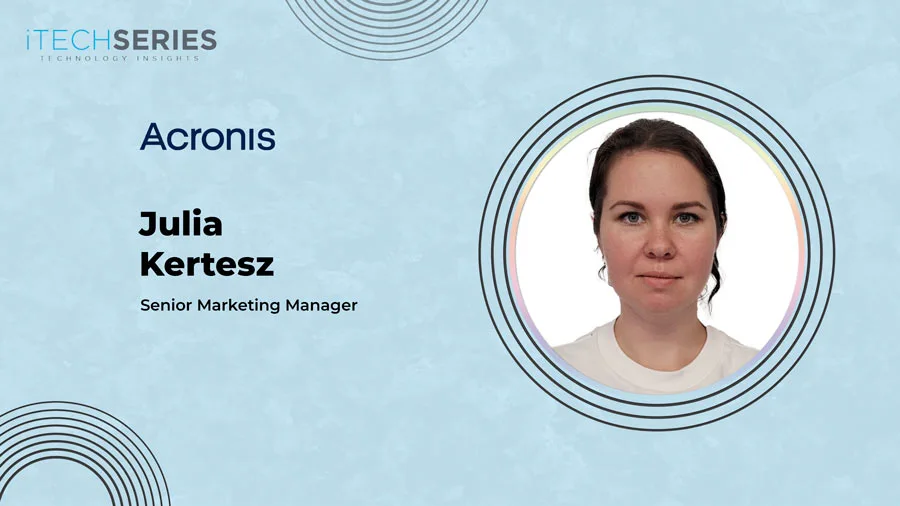Julien Rio, AVP of International Marketing at RingCentral, shares his journey as a go-to-market leader and author, offering insights into marketing, entrepreneurship, customer experience, GTM strategy alignment, and cross-departmental collaboration.
Welcome to the interview series, Julien. Tell us about yourself and your journey as a go-to-market leader and author.
I started my career in Hong Kong, where I spent a decade in various marketing roles, in both B2C and B2B across multiple industries. This breadth of experience gave me the keys to leadership roles with a great understanding of how every aspect of marketing works and participates in the greater picture. Before leaving Hong Kong, I founded and sold a company, which gave me yet another point of view, the one of an entrepreneur who doesn’t simply try to market his products but truly understands what a P&L is and how marketing efforts directly impact a business’s health. In 2017, I decided to move back to France to lead a scale-up that wanted to be acquired by a bigger group. Leveraging my previous experiences, I internationalized the business and enabled its acquisition by a larger American group, where I have then grown and tackled multiple roles and challenges.
Besides my professional career, I always keep up to date with the latest trends and strategies. To achieve that, I keep myself busy with multiple side activities: I regularly write for magazines and blogs, I have launched two podcasts, CX Therapy, and Marketing Blueprint, I have written a couple of books, I talk at conferences, I am a judge for some awards, I teach in University, I create websites, designs, and videos, all of these to keep my skills sharp and remain as close as possible to what marketing teams do daily. My latest podcast, Marketing Blueprint, where I interview marketing leaders around the world is a fantastic way for me to keep in touch with what is happening out there in the marketing world.
Your second book, Customer Experience Unearthed, was published last year. What inspired you to write this book, and what key takeaways do you hope readers will gain from it?
This book is the fruit of 3 years of CX Therapy. Back in 2020, I launched a podcast called CX Therapy with a friend who works at Forrester. In this podcast, we review personal stories that we have experienced, as customers, analyze them, and offer guidance for brands to do better, and provide greater customer experiences while ripping the benefits of it. After three years on that therapy couch, I had plenty of content I wanted to repurpose for a larger audience–that was the genesis of “Customer Experience Unearthed”.
Marketing directly influences the customer experience. As a marketing leader, it is my duty to understand what customers want, how they interact with the brand, and how they benefit or suffer from interacting with it. I have written this book wearing three different hats: as a customer experience professional, as a marketing leader, and, most and foremost, as a consumer.
Readers going through this book will learn very different things depending on their profile. Customers will see what’s happening behind the curtain that would explain poor experiences. CX leaders will get direct and very applicable insights to improve their business’ customer experiences. Marketing professionals will get a different view of how CX directly impacts their success.
How do you effectively align your marketing programs with broader GTM goals in a revenue-driven environment?
The first thing is to understand the broader GTM goal. As a marketing leader, you need to have a seat at the table to understand what the strategy is so you can build a marketing brick that comes to support such a strategy.
Depending on the maturity of your market, the GTM channels at play, and your competitive advantage, your marketing programs may be vastly different. Even within a revenue-driven environment, revenue may not always be the topmost priority. And when it is, revenue alone may not be sufficient and sustainable; it might be too shortsighted, which is why truly understanding what the GTM play is is absolutely essential to aligning with it.
How do you ensure that a brand’s actions consistently reflect its promises, and what methods do you use to monitor and maintain consistency across all customer touchpoints?
Customer Experience is heavily influenced by marketing, but it goes way beyond the marketing department. CX professionals often say, “Everyone is part of the customer experience department,” and in a way, they are right. Marketing sets the tone and gives life to the brand. Customer Service and shop staff are at the forefront of the business and handle direct customer interactions. Finance, accounting, and billing all play a role in the overall experience and can impair it if invoices aren’t clear, contain mistakes, or lack predictability. The product team directly impacts customers with the quality of what they produce. There isn’t a department within your business that doesn’t somehow impact the customer experience, directly or indirectly. This is why it is important, to ensure consistency across touchpoints, and to have an overarching CX department that works hand-in-hand with all business units that keeps the pulse of the customer journey, making sure it doesn’t lack consistency.
What is your approach to planning and executing successful marketing programs?
Start with goals. Always. You may have a fantastic program, beautifully executed, and well measured; if you haven’t started with defining what success looks like, it will never be successful.
To me, the secret recipe is simple: start with goals. Define what good looks like and what you expect from this program. Define how much time and money you are willing to give to make it successful. Many programs, like ABM, for instance, take a lot of time and resources before hitting ROI, and the mistake some marketing leaders make is to give up too early. Write down, before you even build the program, what you wish to achieve and how long you are willing to wait to get there. Then, and only then, you start building the plan, creating the materials and executing it.
You emphasize the importance of breaking down silos to improve CX. What strategies have you found effective in fostering cross-departmental collaboration for a seamless customer experience?
Again, it all starts with goals. The reason why we build silos is that we have different goals. For example, Marketing may want customer service to use a new template to respond to customers with the expectation that this template will satisfy customers in a way that will generate additional sales, and they may face reluctance to use it from the customer service department.
Starting with goals, and sitting down with people to understand what their objectives are is a fantastic place to start. Instead of talking about the new program or rules, start with understanding what the other department’s goals are. Customer Service may care a great deal about productivity–each second matters. Once you understand that, you may actually build a new template that achieves everything YOU want while helping THEM hit their goals, which is saving time.
Even though within an organization everyone has the same overall goal, we all have a personal agenda, a specific set of KPIs. Understanding what drives people is the cornerstone of a collaborative strategy.
“A great GTM leader provides clear direction and supports their team. Communicate goals, adapt strategies based on feedback, and trust your team with the freedom to innovate and execute their ideas.”
Can you tell us about your most challenging go-to-market program?
Whether in Asia or in Europe, my biggest challenge has always been penetrating new markets. The true difficulty with opening new markets is that it is a marathon, and too often leaders treat it as a sprint. You must realize that whatever worked in Market A may not be effective in Market B. You have to find someone who truly understands the local market- A Swiss-army knife who will be able to take your existing content and strategy and cater it to the local market. Most importantly, you have to stay on top of it. Opening a new market is usually the new shiny object everyone talks about and cares about until a shinier object comes around and no one cares anymore.
As a marketing leader, it is your role to truly support the new market even if in the early days, it won’t be profitable. It may not even work at all. You may have no brand recognition, no revenue, a limited budget, and no local teams, and yet, you have to keep pushing until it starts picking up. This is the real challenge of opening a new market, and this is why, unless you have the shoulders, the experience, and the resources for it, you probably shouldn’t open multiple markets at once.
From a technology stack alignment perspective, how have you integrated AI into your outbound and inbound go-to-market efforts?
I personally used AI a lot since early 2023. In the early days, that was mostly a fun gadget to have that would translate content or explain various things. Over time, AI has become something that I use regularly, but always with scepticism. I use it to better structure some long emails I feel don’t convey my point properly, to organize my thoughts, to generate new ideas, to produce some basic content, to invent images to support my presentations, etc. I use it for many different reasons, but always under strict supervision–for now, I never blindly trust anything AI is telling me. There have been too many instances where GenAI invents things and proves itself unreliable.
For my marketing team, we are slowly integrating some structured ways of leveraging AI, but until recently, I was mostly encouraging the team to give it a try, think outside the box, and test it with children’s eyes. I feel that as soon as you institutionalize AI, it becomes just another tool in your box, and you lose the creativity your people may bring to it.
As a GTM leader, what advice would you give aspiring go-to-market folks on building and leading high-performance teams?
Trust your people. A true GTM leader has two roles: give direction and support their people. When it comes to direction, it is essential to have a clear goal that is well communicated, that everyone understands, and that trickles down into measurable KPIs that people can influence. Communicate, communicate then communicate some more.
Once this is done, it isn’t done–goals change, and strategies evolve. Each new success and each new failure is a new learning that will influence your direction. Make the necessary changes and explain them to keep everyone on board.
Then comes the support piece. If you have hired the right talents, if you have given them the right direction, and if you are giving them sufficient space, they’ll thrive. Step back, give them full control over their own realm, and just be here to support them. This doesn’t mean you should disappear until something goes wrong–trust doesn’t exclude control. You are still in charge, and it is your duty to monitor progress, ask questions, offer help and guidance, and, when necessary, step in to rectify things. But do not micromanage or interfere. The more freedom you give your team, the more likely they are to come up with ideas and tactics you would have never thought of.

RingCentral, Inc. is a global leader in AI-driven cloud communications, providing solutions for voice, messaging, video conferencing, and contact centers. Based in Belmont, California, with a worldwide presence, RingCentral delivers a unified communications platform that integrates seamlessly across devices, enhancing collaboration and business interactions. Used by over 350,000 organizations, RingCentral offers scalable, cloud-based solutions that improve communication flexibility for businesses of all sizes, without the need for costly on-premise hardware.
Julien Rio is a global marketing strategist and entrepreneur with extensive expertise in both digital and offline marketing. He is the author of “The Trade Show Chronicles” and “Customer Experience Unearthed” and holds a CCXP certification. Julien blends his deep marketing knowledge with a passion for creating impactful customer interactions. As a seasoned public speaker, he shares his insights on marketing, customer care, and technology at global conferences, dedicated to driving innovation and excellence in the field.











